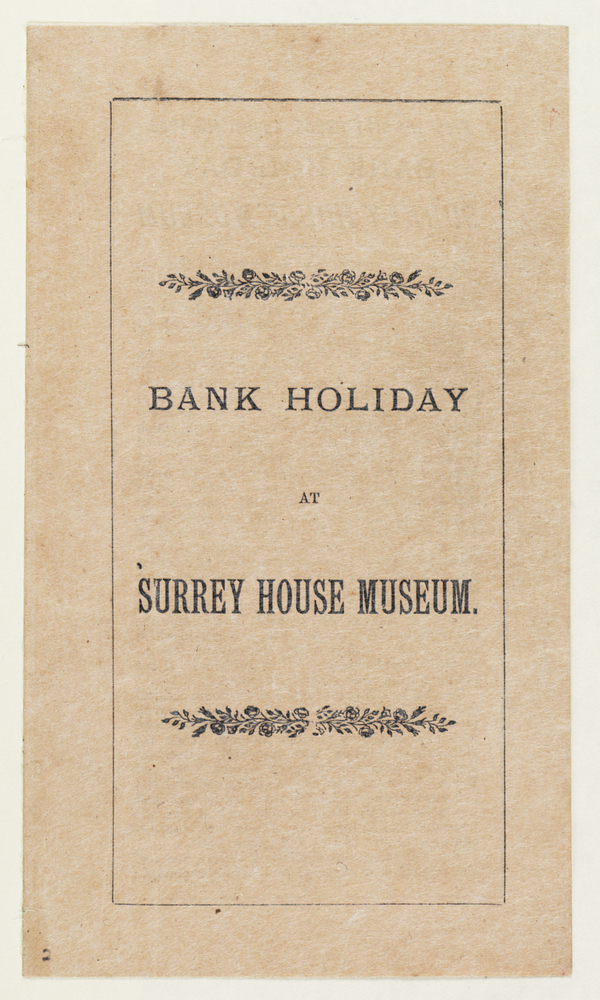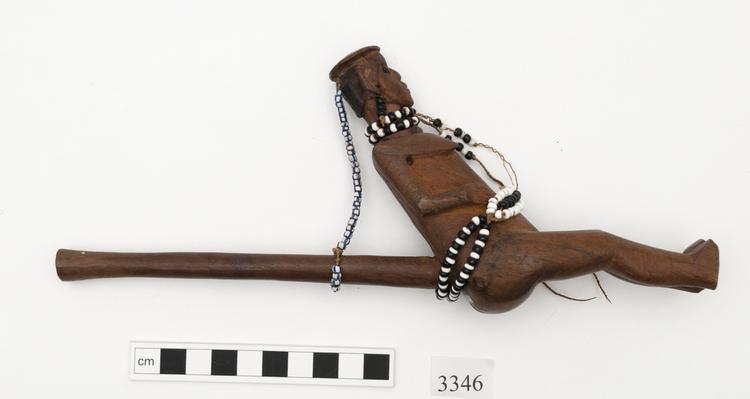In recent years, campaigns such as Rhodes Must Fall and Decolonise This Place have joined long-running indigenous activist movements, to demand that museums and other heritage institutions reckon with their imperial pasts.
Following the toppling of Edward Colston’s statue in Bristol during the Black Lives Matter protests in the summer of 2020, many previously well-regarded historical figures have also come under renewed scrutiny.
For these reasons, the charitable reputation of Frederick Horniman appears increasingly unstable, and the history of the museum he founded to ‘bring the world to Forest Hill’ needs to be reappraised. In fact, Topple the Racists a crowdsourced map of UK statues and monuments linked to slavery and racism, describes Horniman as an “arch colonialist, exploiter of empire and shameful collector of native human artefacts”. (It should be noted that Topple the Racists also describe Horniman as a “plantation owner,” however the Horniman family did not own tea plantations and mostly purchased Chinese tea at auction in London).
How then should we understand the legacy of Frederick Horniman, and the museum that carries his name? My ongoing PhD titled, ‘Museum Collections and Legacies of Imperialism: Curating Colonial Violence at the Horniman Museum’ asks just this.
The Extraction Empire
One of empire’s key functions was extraction.
This included the extraction of people, wealth, minerals, food and commodities, such as the tea packaged and sold by Horniman’s Tea. It also included the extraction of objects and material heritage. My research takes a critical look at the Horniman’s collection and curation practices within this context of extraction.
By reframing the act of collecting as also an act of dispossession, I hope to look at the Horniman’s role in the British Empire’s insatiable appetite for land, resources, artefacts, and other valuables.
To do this, I am focusing on the early history of the Museum around the turn of the 20th century and its connection to the British Empire.
In 1901, Frederick Horniman donated the newly constructed Horniman Museum and Gardens to the London County Council “as a free gift to the people, for ever”, intended for the instruction of working people whose “circumstances prevented [them] from visiting distant lands.”
In its attempts to become a public educational resource, the Museum was part of wider efforts to transform the metropolitan working-class into a class of imperial citizens.
The majority of these new imperial citizens never left British shores, yet empire was increasingly embedded into their everyday lives through tea, sugar and tobacco, as well as in their leisure and educational activities. It might be just as accurate to say that Frederick Horniman bought the empire to Forest Hill, and from this vantage point, its visitors were able to observe the distant lands and peoples over which it laid claim.

Surrey House Museum was open to various parties during holidays and in the evenings.
Although the Horniman’s founding collections from this period were large and diverse, my work centres on objects extracted from three colonial territories in particular: Egypt, Burma (now Myanmar) and South Africa.
Egypt
Britain’s unofficial colonial rule in Egypt from 1882 to 1914 is often referred to as the ‘veiled protectorate’. During this period, the expansion of the Egyptian tourist industry led to the increased circulation of ancient Egyptian artefacts on the European art market and in European museums, such as the Horniman.
Frederick Horniman visited Egypt in February 1896 at the end of a world tour that also took him to Japan, China, India and Burma.
He collected a number of ancient Egyptian mummies and artefacts during this trip. Prior to his trip, Horniman sourced his Egyptian collections, including a number of mummified human remains, from auction houses, private dealers and personal acquaintances. Many of these human remains were partial, including three heads and a pair of feet. This was symptomatic of the unregulated looting of Egyptian tombs by European tourists, which turned human remains into easily transportable travel souvenirs.
During his trip, Horniman was primarily interested in collecting Egyptian antiquities through a network of European dealers and Egyptologists, like this mummy coffin presented to him by the Egypt Exploration Fund after touring one of their excavation sites.
Horniman showed almost no interest in collecting modern Egyptian items. In fact, in his travel diaries, he regularly reproduced stereotypes of modern Egyptians as dirty and lazy, an impression that would have been prevalent amongst Victorian society at the time.
He described the lower quarters of Cairo as, “primitive and squalid” and wrote, “one half of the people seem to do nothing but sit about, and the other half watch them”. Horniman immediately contrasted this vision of modern Egypt with his sense of awe when visiting the ancient temples at Dendera, where he marvelled “at the high state of civilisation [that] those who erected them had arrived at”.
This distinction between modern and ancient Egypt was reinforced by the noticeable absence of modern Egyptian artefacts on display at the Horniman, and others like it. This gave the impression that Egypt had been in a constant state of decline since the Pharaonic period, and was therefore inferior to contemporary Western culture.
This formed part of wider efforts to discredit the claims of modern Egyptians to ancient Egyptian heritage, which continue to this day.
Burma
Prior to his visit to Egypt, Frederick Horniman also visited Burma. He landed in Mandalay on 29 November 1895, 10 years to the day after the British removed King Thibaw from his throne and sent him into exile during the Third Anglo-Burmese War.
Although Burma was officially annexed to British India shortly after this, at the time of Horniman’s trip a decade later, British military violence was ongoing, particularly in the Burmese highlands.
In fact, when Horniman travelled to Myitkyina, which he described as, “the limit of civilisation,” he visited with British military officials as they prepared for a punitive expedition against Sana Kachins, an ethnic group living in the Kachin Hills. Here he was presented with a cache of Kachin weapons, which served as trophies of British military success in ‘pacifying’ those who continued to resist imperial rule.
When the Horniman’s newly acquired Burmese objects went on display following Frederick Horniman’s return to Forest Hill, there was a notable focus on Burma’s fallen monarchy.
The display included images and representations of King Thibaw and Queen Supayalat, as well as a gong said to have been taken from their Mandalay Palace. While we do not know the exact information about its background or origin (known as provenance in museums), some royal objects were sold off in palace auction sales to raise funds to compensate troops following the Third Anglo-Burmese War. Thus, it may have entered the European art market this way. There were also rumours of looting by British soldiers, although these were disputed.
It’s important to note that the selling off of Burmese royal heritage coincided with the almost complete destruction of Burma’s pre-colonial social and governmental systems.
In contrast to the typical British colonial approach, which usually involved replacing the monarch and ruling indirectly through a local court, the British exiled the royal family, abolished the nobility, demolished aristocratic homes, and took over every aspect of governance right down to the village level.
When the Royal Library burnt down on the first night of British occupation, allegedly at the hands of drunken soldiers, this represented a significant loss of knowledge concerning pre-colonial Burmese ways of life.
Yet this knowledge would soon be accessible thousands of miles away at the Horniman and other similar institutions.
South Africa
Frederick Horniman began collecting objects from South Africa as part of his wider ethnographic collection in the late 19th century.
His South African collections typically contained little-to-no provenance information. They were mostly comprised of everyday objects, such as utensils, pipes, snuff boxes, and containers.
Frederick Horniman never visited South Africa, and obtained his collection exclusively through a network of auction houses, estate sales, returning missionaries and colonial administrators, as well as ethnographic dealers. Horniman’s South African collections are indicative of the way in which objects from the empire circulated freely on the European market, generating profit for those who bought and sold them but rarely for those from whom they originated.

pipe (narcotics & intoxicants: smoking)
Anthropology
The manner in which Horniman’s South African collections were curated and interpreted reproduced the racist logics of the time.
In fact, the Museum’s guidebooks frequently used language to describe South Africans that would now be considered hate speech, yet which appealed to existing Victorian ideas of racial hierarchies.
Anthropologist Alfred Cort Haddon was appointed advisory curator to the Museum in 1902. Under Haddon, the South African collections would be reframed as data sets for anthropologic research and race science. Haddon believed that studying the ‘native races’ of South Africa and their material culture would lead to more effective colonial governance. To do this he employed now widely discredited race science such as craniology: the study of human skulls.
Curating Racism
The racist logics of the late-19th and early-20th Century, Horniman Museum and Gardens depicted modern Egypt as uncivilised, presented pre-colonial Burma as a relic of the distant past, and portrayed South Africans as savage and primitive.
It also shaped the way Museum visitors understood themselves as racially superior. Before being confronted with a Zulu trophy mounted above a mantelpiece in Surrey House, the guidebook warned visitors,
when entering, on the left it would be as well to look in the two mirrors to make sure of your identity
This encouraged visitors to interpret the collections through the lens of racial difference, and to draw comparisons between their own culture and those on display.
Later, during the early-20th century, Haddon introduced a physical anthropology display, which included skulls from the “modern races” of Australia, New Hebrides, British New Guinea, New Zealand, Borneo, West Africa and England, alongside taxidermized apes and casts of prehistoric man.
It also included photographs of “native types”. Through this display, visitors were encouraged to make inferences about the stages of ‘evolution’ of a variety of different races, and where they themselves sat on this evolutionary scale.
For its late-Victorian and early-Edwardian audiences, inspecting the Horniman’s ethnographic collections was as much about understanding oneself as it was about encountering the ‘primitive other’.
This project is generously supported by AHRC Midlands4Cities.



